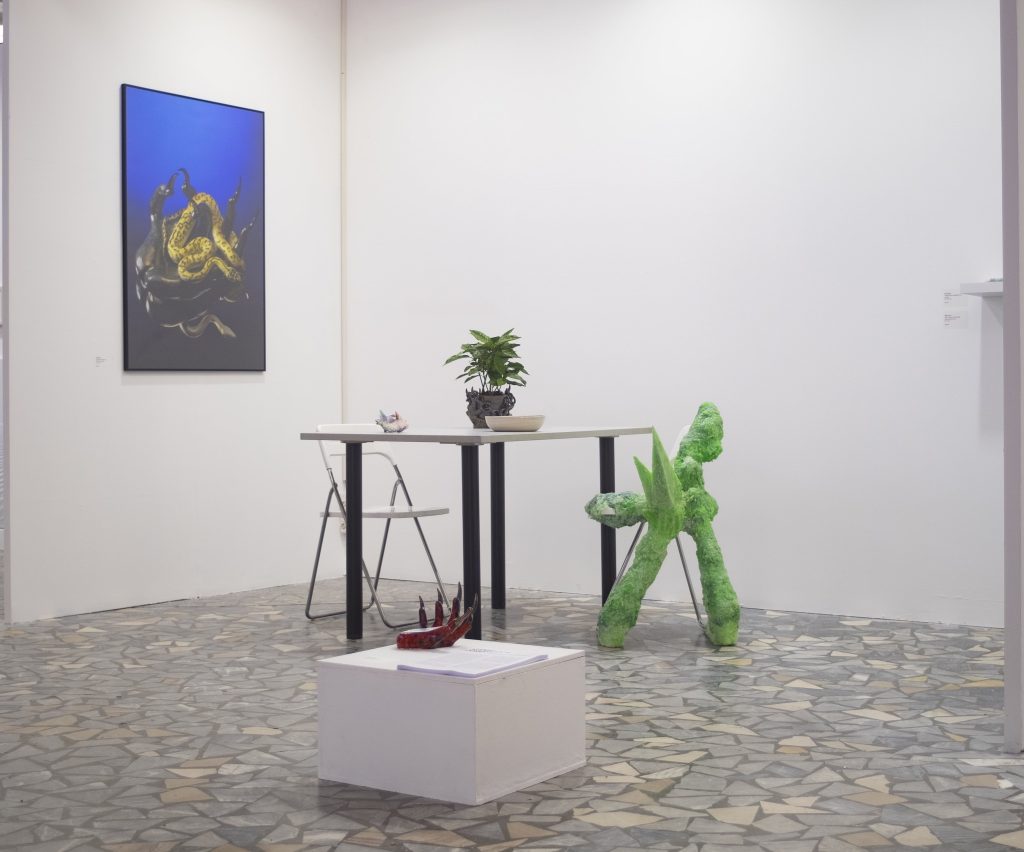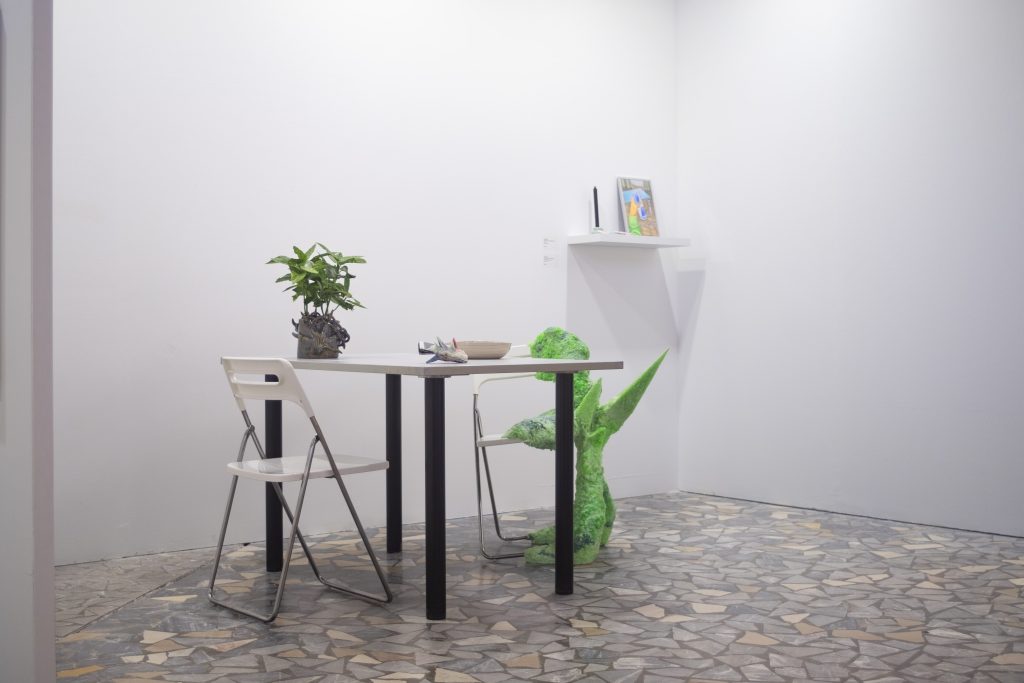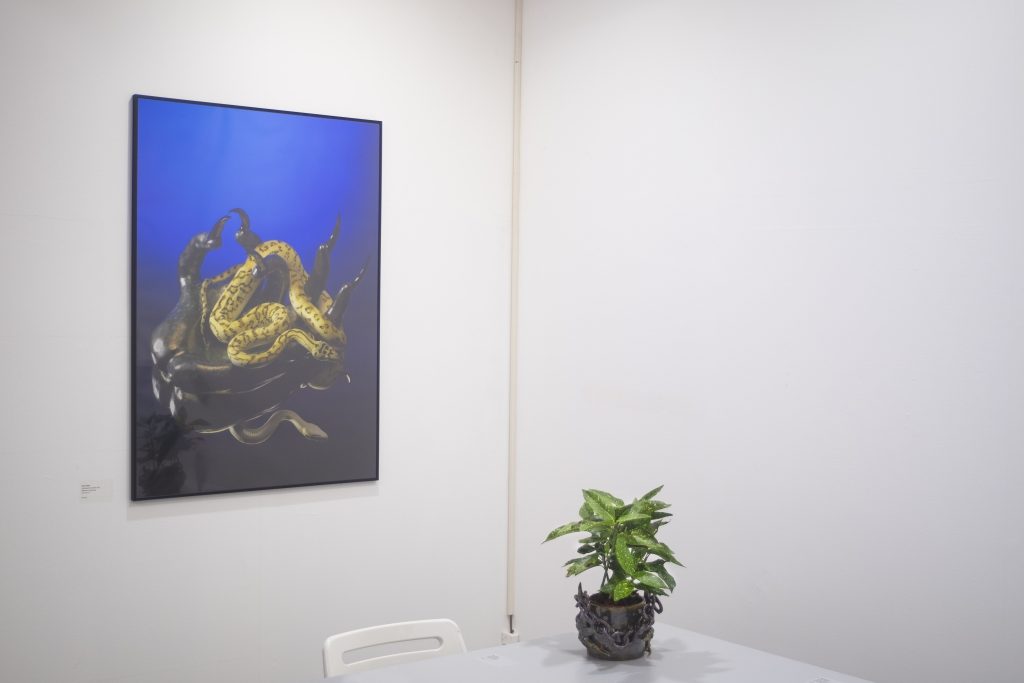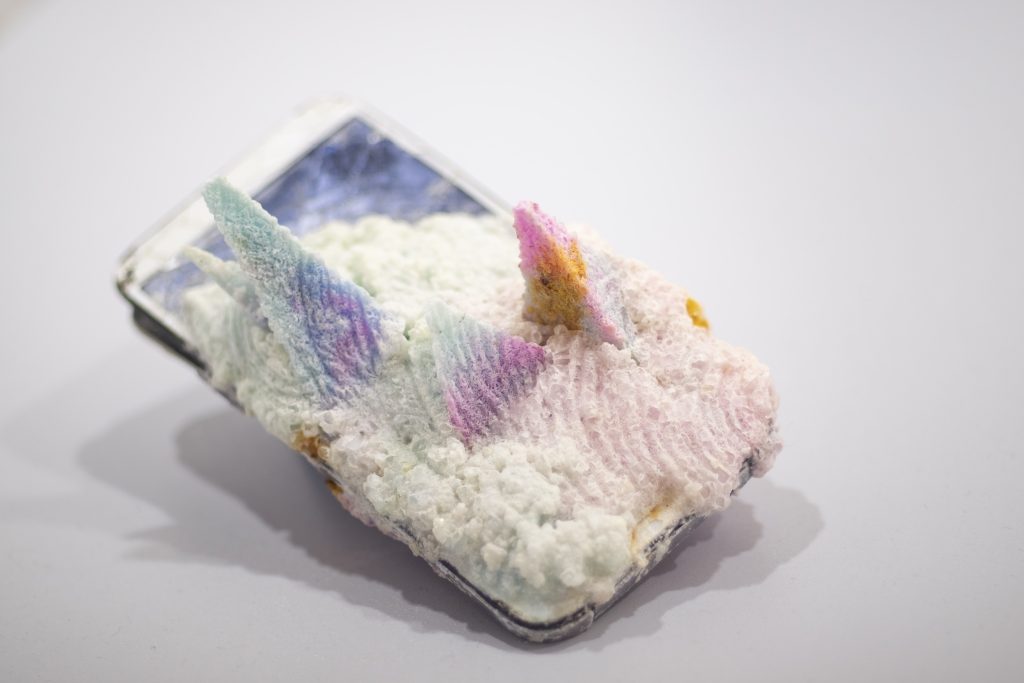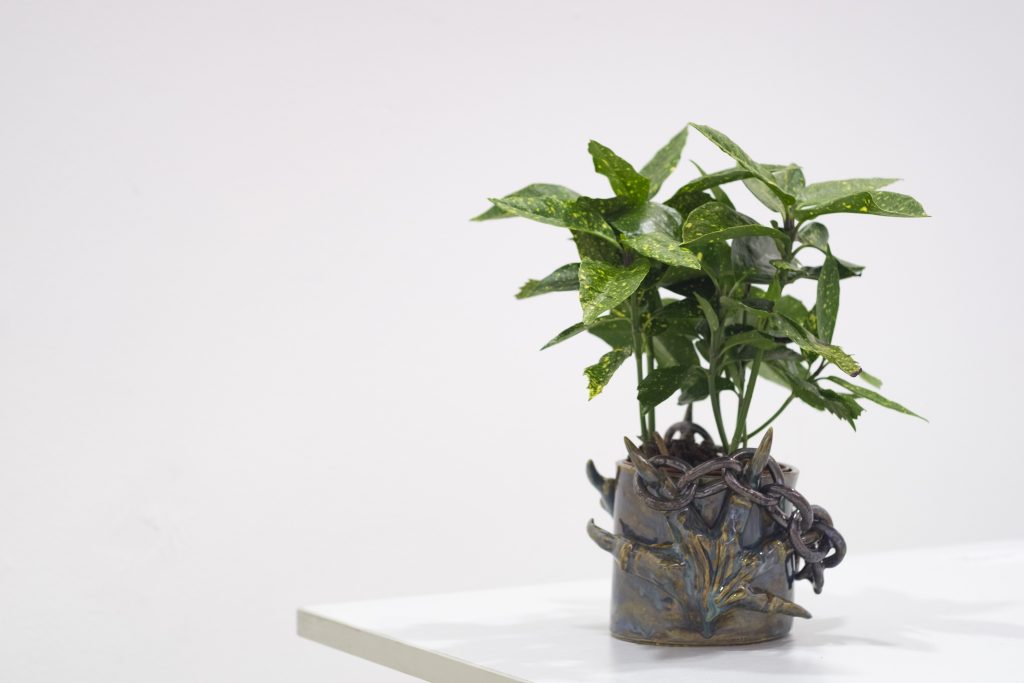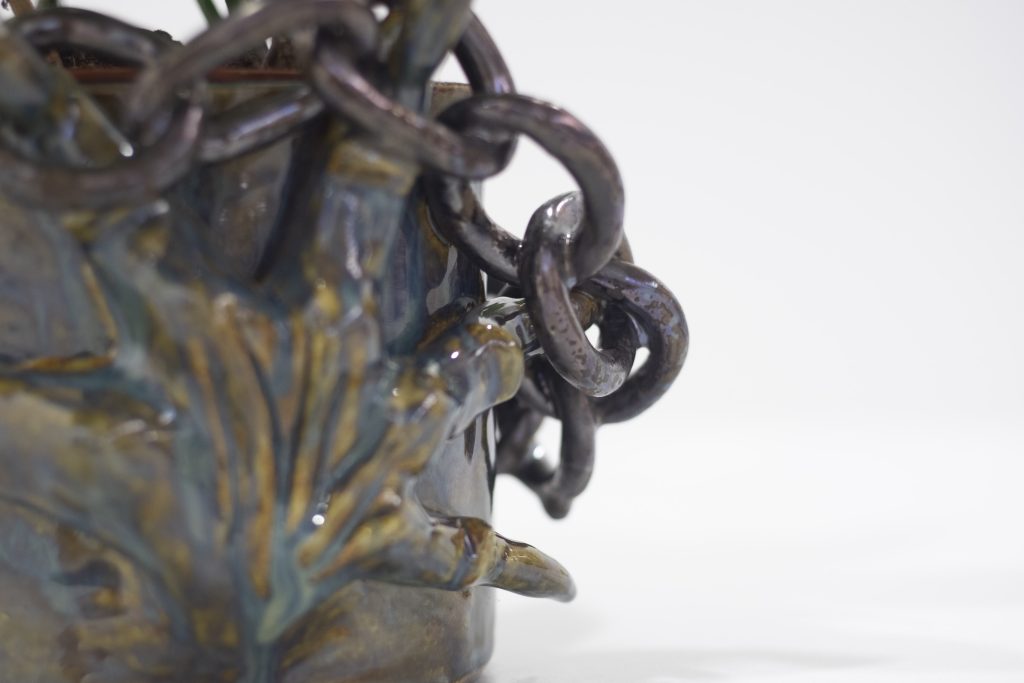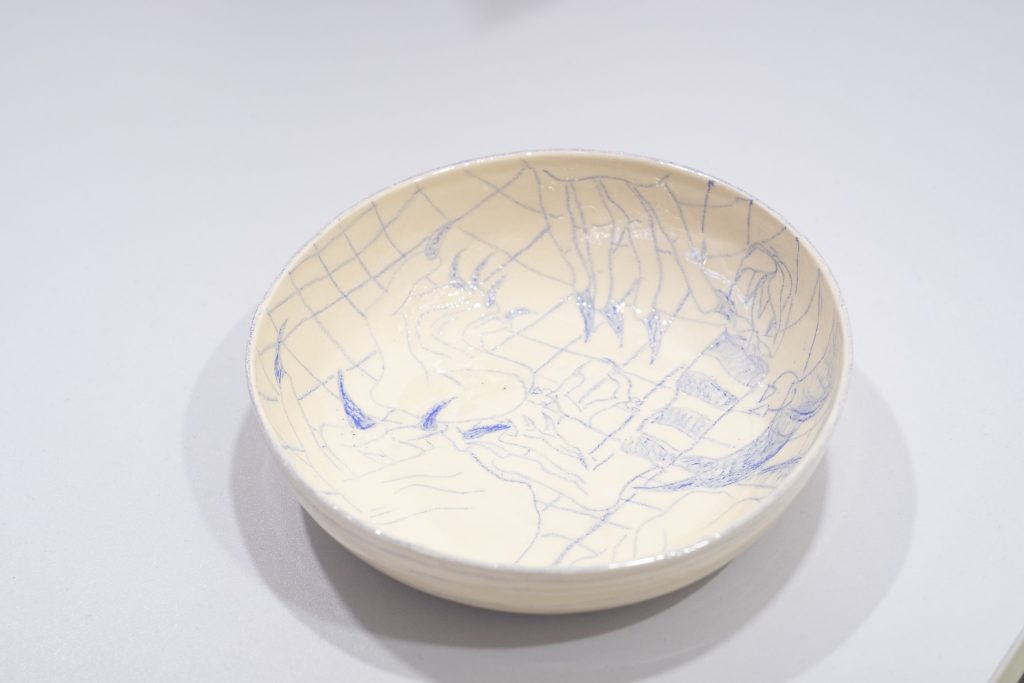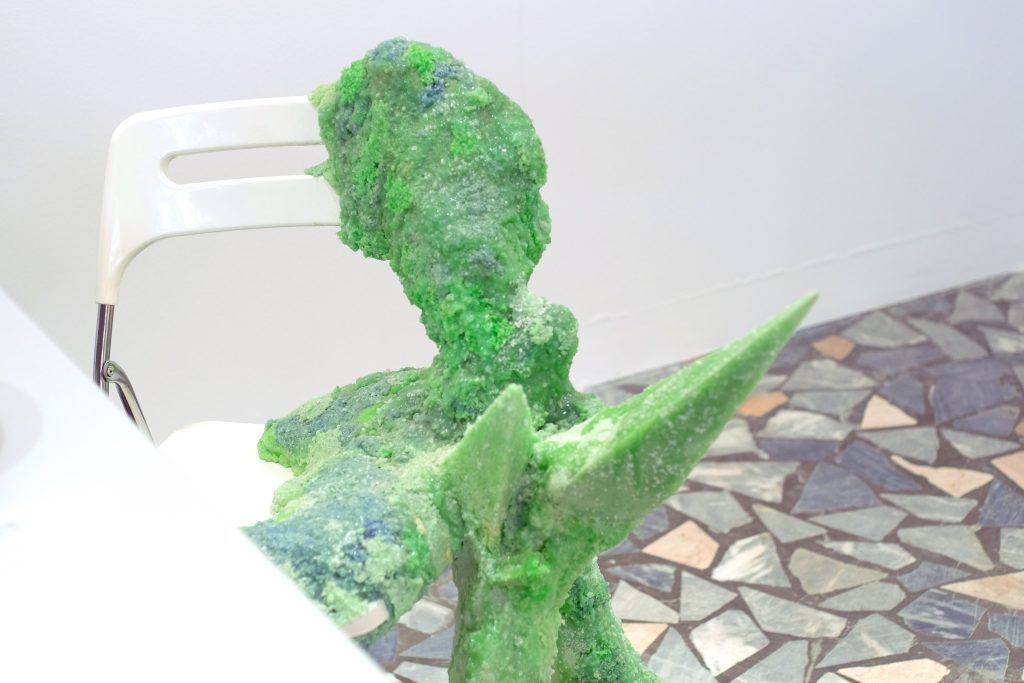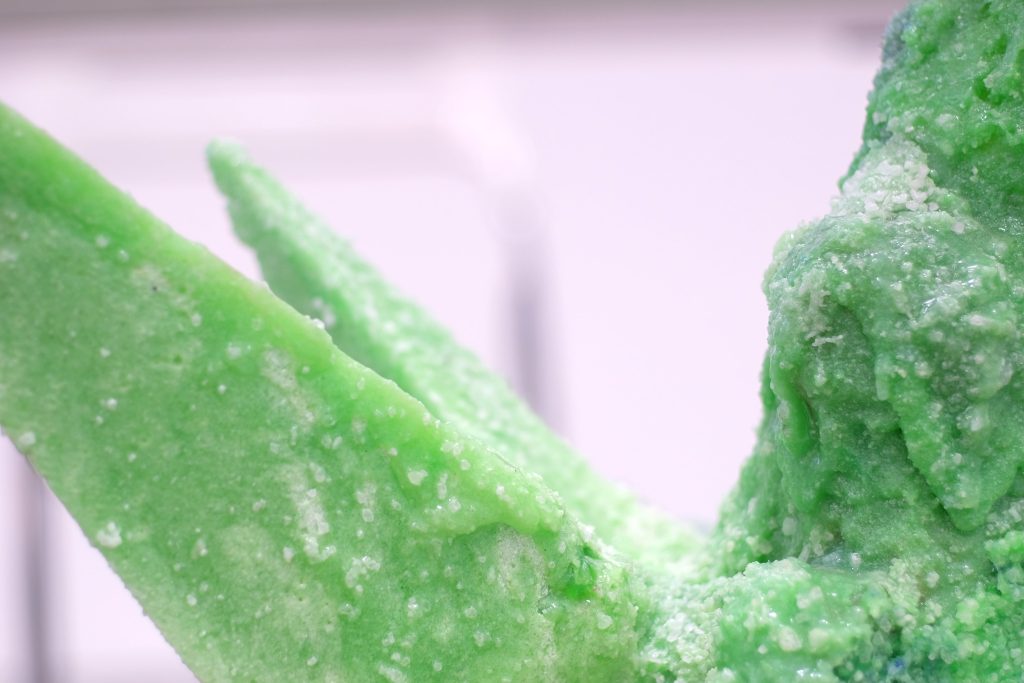The Others 2021
AGAINST DOMESTICITY
Matteo Gatti, Naomi Gilon
Curated by Angela La Rosa and Deborah Maggiolo
04/11/2021 – 07/11/2021
The Others artfair, Torino Esposizioni Pad.3, via Francesco Petrarca 39b Torino.
The term domestication refers to the process by which an animal or vegetable species’ existence is disciplined by the strict coexistence with the human being and by their explicit control. Such a subjugation entails remarkable alterations in the vital ecosystem of multiple organisms, unbalancing their behavioural, physiological and biological equilibriums. The same dominion willingness regulates human relations with Otherness, intended as whatever does not conform with the normated subject, thus defining multiple discriminations of a speciesist, racial, sexist and classist kind. But if Otherness is a social, political and cultural construct, the same is true for the concept of “normality”, which is repeatedly modulated by the dominant power. Illuminating, in these regards, are the considerations promoted by prominent personalities in the field of Environmental Humanities such as Karen Barad, Rosi Braidotti, Donna Haraway e Timothy Morton; ideas able to shake things up and trigger a process of critical inspection of the taxonomic paradigms that order the current world. Posthuman, ecological and intersectional feminist philosophies are sketching a vision of reality as given by the understanding of an absolute mixture and interconnectedness among all things: a relational ecosystem whithin which diversity becomes a constitutive part of identity itself. The two faces of the coin, Otherness and “normality”, inevitably fuse together and the idea of “monstrosity” - maximum expression of radical Otherness - leaves behind any derogatory meaning, founding itself as nothing more than the reflection of the human.
It is precisely on the paradox of “monstrosity” that the project proposed for the Fair wonders about, posing itself as an invitation to inhabit the private sphere of the home in an eccentric and inclusive way, through the staging of a shared moment of daily life with the “monster”. Against any attempt to univocally define, strictly delimit or brindle identity into a discursive construct of instrumental nature, Against Domesticity: Making Room for the Inappropriate/d Other seeks to generate an osmotic dimension for interchange with diversity. Globally, in the last year and a half, our contemporary living habits had to reconfigure in a sudden and unexpected way, assuming a claustrophobic value of both mental and physical confinement. Therefore, the house has been transformed into a device of human "taming": domesticity and domestication have tended to coincide. In the hypothesis of cohabitation proposed here, every distance or border is canceled in favor of a non-conformist and unusual relationship. The dimension of “monstrosity”, yet without losing its specificity, determines and, at the same time, is incorporated by a new approach to the domestic environment. The latter, which has always been the emblem of a fictitious representation of social normativity, evolves into a space for active and participatory reflection.
The possible home thus imagined becomes an experiential place where visitors can mirror themselves in diversity, and where the fear of the dissimilar turns into the awareness of one's own constitutive Otherness. In reference to Donna Haraway's pamphlet The Promises of Monsters. A Regenerative Politics for Inappropriate/d Others (1992) - which, in turn, borrows the expression from Trinh Minh - the purpose of this project is to converse with the inappropriate and inappropriated subject. Intended as that polymorphic and polysemic form of identity, never given in a definitive way or grasped in its totality, this subject is rather expressed in a process of continuous becoming and in relation to multiple other human and non-human, organic and inorganic ones. Against Domesticity: Making Room for the Inappropriate/d Other asserts itself as one of the possible prototypes of a coexistence, that has always been more-than-human, to be rediscovered.
Through the works of Matteo Gatti and Naomi Gilon, the narration which takes shape in the exhibition space materializes the fantastic speculation of a different future. The installation project stages a hypothetical domestic environment populated by inappropriate and inappropriated presences which directly interact with the typical elements of home familiarity. It is the works themselves that suggest the mode of cohabitation of an existing space, making it a fertile ground for encounter and dialogue: in this vision, the house becomes a traversable threshold, a permeable dimension and a model for a new interspecies habitat. Matteo Gatti’s (Olgiate Olona, 1989) practice could be described as a playful and irreverent reverie, capable of connecting different ontological planes and generating eccentric moments of coexistence between the human, animal, vegetable and mineral data. The three selected works - the drawing Miss u more than I should (2020), the chair Nisse (2020) and the phone Darti attenzione mi distoglie dai processi evolutivi della mia specie (2018) - suggest a total erosion of the ordinary hierarchies of the living. Thus imagined, the process of mutation is physically tangible in an aesthetic outlined through fusion processes and multi-material stratifications which imitate geological sedimentation. Overtly inspired by the world of pop culture and the mechanisms of Science Fiction, the works by Naomi Gilon (Arlon, 1996) extend in the form of hybrid articulations. At the same time aberrant and seductive, they reactivate the dualism inherent in the image of the "monster", always located between a state of prodigious wonder and of demonic admonition, recalling the figurations found in myths, fables, popular legends and cinema. Gilon's disturbing creatures take shape in anthropomorphic objects, combining everyday utensils with monstrous elements as is the case for the four chosen works - the print Charmeuse de serpent (2020), the plate Sketch Plate (2021), the plant holder Chained! (2021) and the candlestick Paw candlestick pink nails (2021). The set-up proposed by Against Domesticity: Making Room for the Inappropriate/d Other is given by an aseptic space dominated by shades of white and composed of a few structural units. Here, the aforementioned works intervene to contaminate the environment with their formal and tonal strength, transforming it completely. The seven works become the undisputed protagonists of a scene articulated by multiple artistic languages. At the center of the exhibition area, on a white table - a convivial element for the symbolic sharing of a meal - one finds placed Sketch Plate and Chained! by Gilon together with Darti attenzione mi distoglie dai processi evolutivi della mia specie by Gatti. On the sides of the table, two chairs: on one side Nisse, the work by Gatti, and on the other its "twin" by Ikea. On the back wall a common white shelf backs up Paw candlestick pink nails by Gilon and Miss u more than I should by Gatti. With its considerable size Charmeuse de serpent dominates the wall opposite the shelf. Simulating a living interior, the exhibition stand aims to stage an unusual domestic environment that lives on the participatory relationship between the user and the "monstrous other", thus suggesting a change of universal perspective on our being in and of the world.
The research of both artists proceeds towards a direction in which, firmly situated in the current reality, the "monstrous" element intervenes in the human existential sphere and is simultaneously incorporated into it. The centuries-old pre-established division between the hegemonic subject and the material-symbolic construct acquires its own ontological plan and raison d'etre, within and in connection with the others. The paradoxical dynamic thus established, according to a biological metaphor affirmed by artistic processuality, makes the "monster" an integral part of the living cell of the house and of common life. The works by Gatti and Gilon indicate a desirable transition - both figuratively and concretely intended - towards a different historical, political and cultural stage, characterized by eccentric cohabitation and awareness of interconnection. In conclusion, the current intellectual, philosophical, political and environmental drives suggest the need to analyze and/or rethink the present forms of interspecies coexistence and ways of inhabiting the world together. What I would like to highlight [...] is the priority of the relationship, the awareness that the Non-one subject is not at the origin of himself, but the effect of the perennial flow of encounters, interactions, affectivity and desires that come from others and from elsewhere. With these words Rosi Braidotti best summarizes the reflection at the center of Against Domesticity: Making Room for the Inappropriate/d Other, where the "monstrous" element becomes a tangible expression of the dialectical relationship between "normality" and Otherness. As Timothy Morton would say, in its vague and ambiguous being, art allows us to glimpse beings that are beyond - and between the interstices - of our usual categories. Gatti’s and Gilon’s works trace a feasible route in this direction.
[1] She, the Inappropriate/d Other, Center for Twentieth Century Studies, University of Misconsin-Milwaukee, 1986
[2] Rosi Braidotti, Il postumano. La vita oltre l’individuo, oltre la specie, oltre la morte, DeriveApprodi, Roma, 2014 (pp. 117 – 118);


